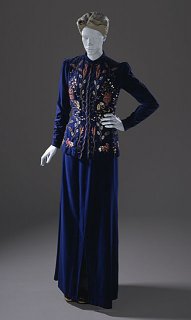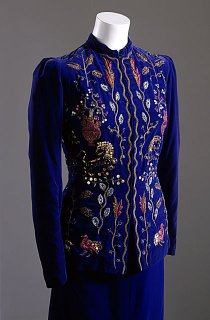SomethingElse
Press escape to continue.
- Joined
- Mar 22, 2007
- Messages
- 5,444
- Reaction score
- 0

Nina Ricci (1883-1970) was an Italian fashion designer.
Born Maria Nielli in Turin, Italy in 1883, she moved to Florence with her family at age 5 and then to France in 1895 at age 12. At the age of 13, she began an apprenticeship at a dressmaker. She continued to pursue her love of fashion throughout her teenage years. She married jeweler Luigi Ricci in 1904, and then became Maria Ricci. They had a child named Robert. In 1908 Nina joined the house of Raffin as a designer and remained there for 20 years. She became his partner, and then moved on to create her own design house in 1932.
The house of Nina Ricci was founded by Maria Ricci and her son Robert in Paris in 1932. Maria was 50, and after working at Raffin for so many years was itching to design her own creations. Madame Ricci designed gowns while Robert managed the business and finances. She worked with the fabrics directly on the mannequin to ensure they had shape once they were finished. Nina Ricci designs soon became known for the refined, romantic, always feminine feeling Maria adds to all of her collections.
In 1945, with the war over, designers were casting about for a way to revive the infatuation women had formerly had with haute couture, while raising money for war relief. Robert Ricci had an idea which Lucien Lelong, President of the Chambre, put into action. Over 150 mannequins from 40 Paris couturiers, including Balenciaga and Madame Gres, were dressed in the labels' best fashions and were placed in an exhibition held at the Louvre, in Paris. After a huge success in Paris it toured Europe and then the USA.
By the early 50s Nina Ricci was nearing 70 and she slowly she ceased to take an active role in design, choosing to just keep an eye on the house. Her son chose the new head designer in 1954, the Belgian Jules-Francois Crahay.
Maria Ricci died on November 30, 1970 at the age of 88.
More biographical information here.
viewimages.com . wikipedia.org
Last edited by a moderator:






















